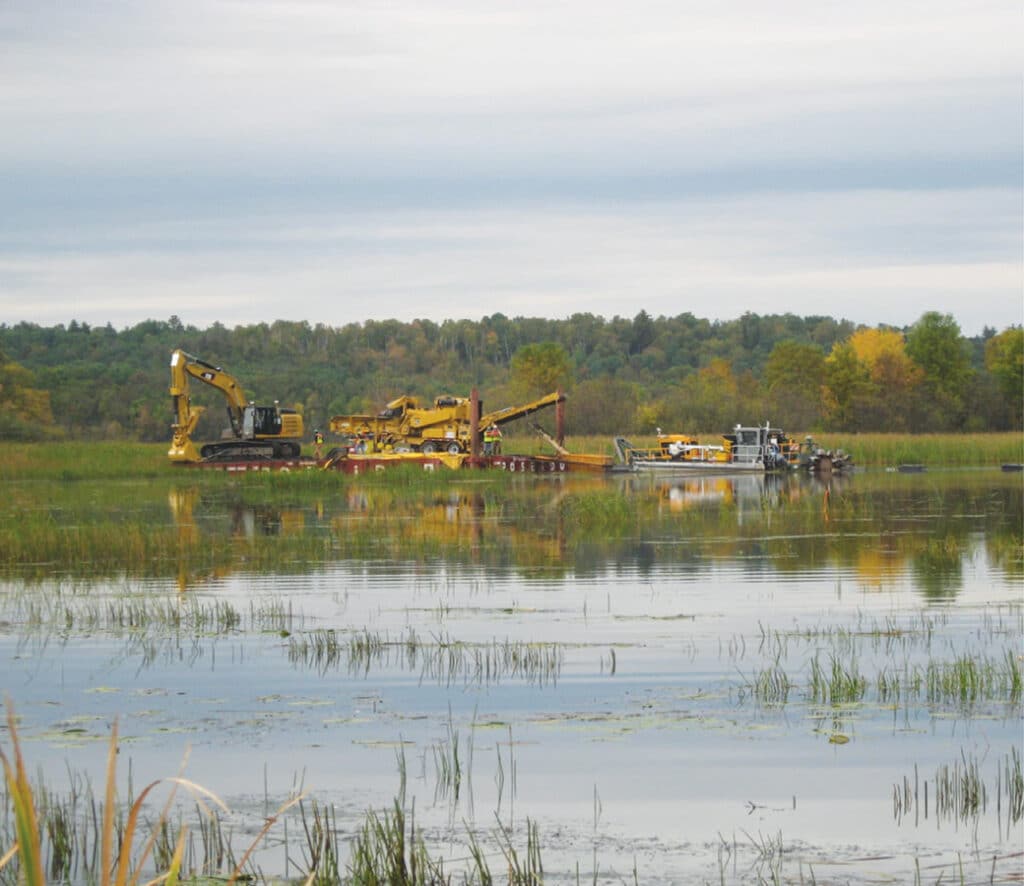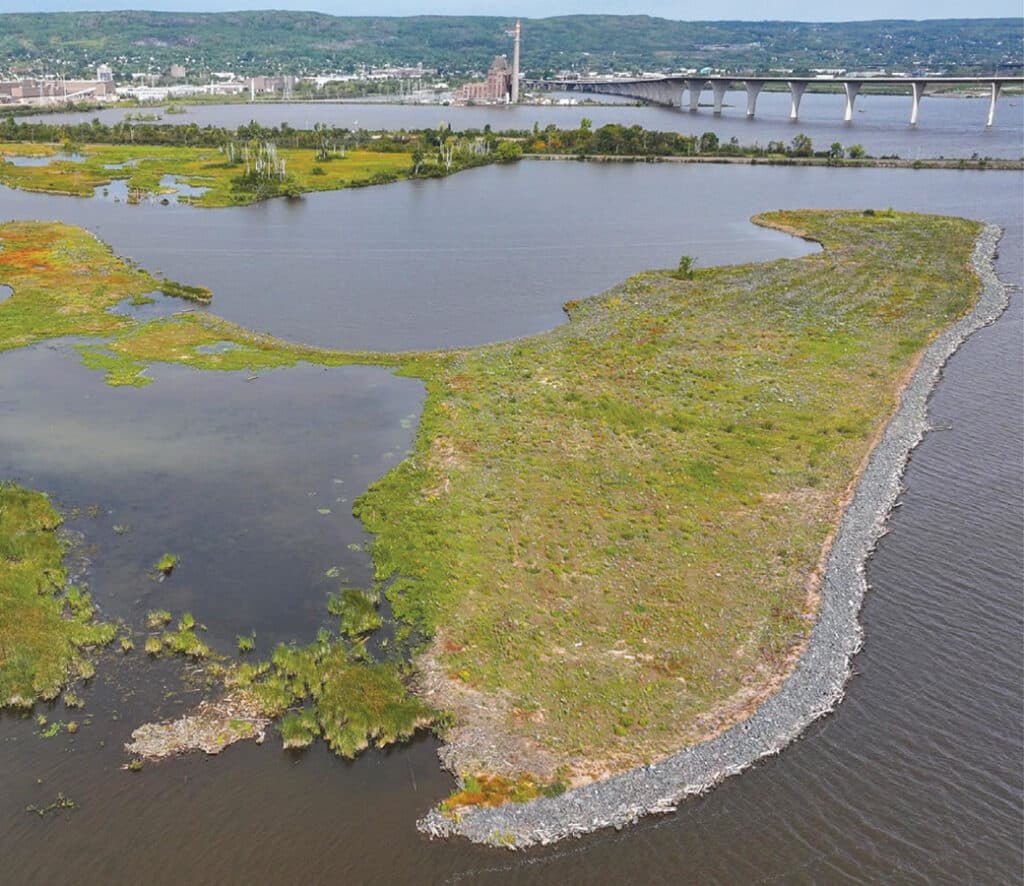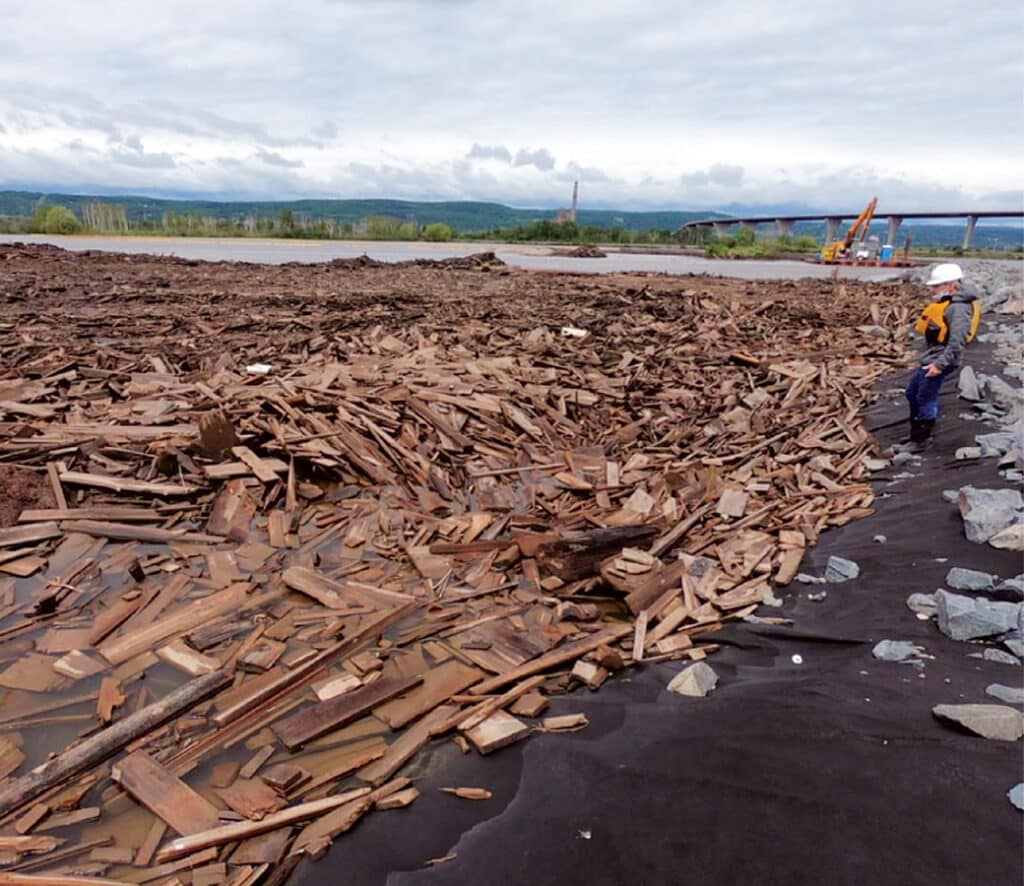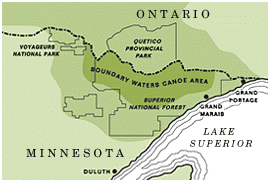Scientists and environmentalists regard estuaries as some of the most biologically diverse yet endangered ecosystems on Earth. In collaboration with the Minnesota Land Trust, Hamline University’s Center for Global Environmental Education has produced a new film, Estuaries in the Balance: Freshwater Nurseries of Lake Superior. The film highlights both the human impact and ongoing restoration of North America’s largest freshwater estuary.
Largest freshwater estuary
The St. Louis River Estuary, located at the western tip of Lake Superior, is North America’s largest freshwater estuary. Here, the 192-mile river meets the great lake in a landscape alive with diverse wildlife. Yet beneath this vibrant scene lies a history of significant environmental struggle.
In the mid-1800s, the arrival of Great Lakes cargo ships to the Port of Duluth-Superior ushered in timber, manufacturing, and mining industries. In 1871, the construction of the Duluth Canal dramatically reshaped the wetland-rich shoreline. Excavation for ship docking eliminated over 3,400 acres of wetlands, according to the Minnesota Department of Natural Resources.
For more than 150 years, waste was routinely dumped along the shoreline and into the watershed with little regard for long-term effects. This caused widespread habitat loss, sediment contamination, and water pollution. “When the estuary was at its worst, the fish skin would slide off the fish when they touched it. People turned their backs on the river because it was so horrible.” – from Estuaries in the Balance.
In 1987, the area was designated an Area of Concern under the U.S.-Canada Great Lakes Water Quality Agreement. Today, it remains the second-largest among the 31 U.S. Areas of Concern. According to the agreement, places of concern are defined as “geographic areas where significant impairment of beneficial uses has occurred as a result of human activities at the local level.”

Restoration projects have included returning shorelines to natural levels, adding native plants, and removing wood waste. (All photos courtesy MNDNR)
Restoration continues
Despite its troubled past, restoration efforts are well underway. State and Tribal agencies from Minnesota and Wisconsin, alongside federal and local partners, continue to clean up the estuary and restore its habitats. As a result, encouraging signs are emerging: wild rice now flourishes along the shorelines, and waterfowl and fish are once again abundant in the shallow waters. “This estuary…this is the center of all things. All good things come from here,” said Gwiiwizens, also known as Ricky Defoe, a Fond du Lac elder.
For the past 15 years, the Minnesota Land Trust has played a key role in these efforts which delves into the estuary’s environmental challenges and the collaborative work behind its recovery.
The 60-minute film focuses on two critical watersheds where the lake and river converge, the St. Louis River Estuary and the Bad River Slough. Produced by Hamline University’s Center for Global Environmental Education, the film will be broadcast on public television and is expected to air in November.


More info:
- Estuaries in the Balance: Freshwater Nurseries of Lake Superior – CGEE
- St. Louis River Restoration Initiative – Minnesota Department of Natural Resources
- Great Lakes Areas of Concern – Environmental Protection Agency

